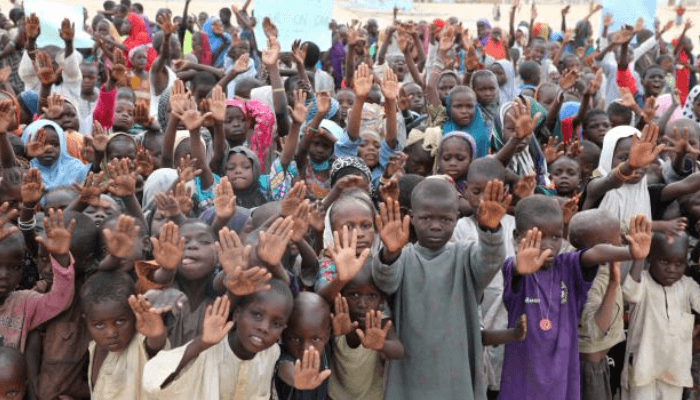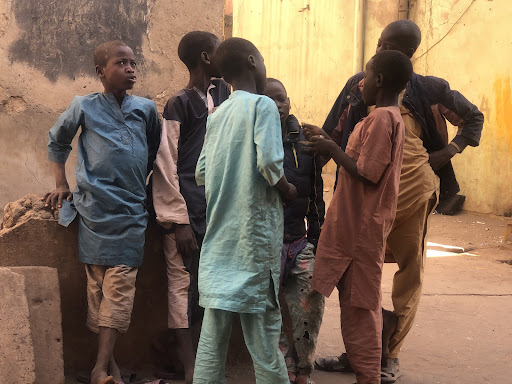There’s a heartbreaking truth we can’t ignore any longer—over 20 million children in Nigeria are still out of school and not getting any form of formal education. It’s not just a number; it’s a daily reality for millions of young minds who wake up without the chance to learn, grow, or dream beyond their current struggles. You see it most starkly in the North, where the silence in many classrooms is louder than any protest—empty seats, forgotten chalkboards, and buildings barely standing.
But this isn’t just about broken walls or missing textbooks. It’s about a system that has, for too long, failed to prioritise the future of its children. When schools are neglected, when education is underfunded, and when leadership looks the other way, it’s not just kids who suffer—it’s our entire nation. We’re not just facing an education gap; we’re standing at the edge of a long-term development crisis. And unless we act boldly and urgently, the cost will be paid in lost potential and shattered dreams.
The Scale of the Crisis
The 2023 UNESCO Global Education Monitoring Report places Nigeria firmly among the world’s worst performers, with over 20.2 million children out of school. UNICEF’s national data confirms this, estimating roughly 10.5 million kids outside the classroom despite the constitutionally guaranteed right to free, compulsory primary education. These divergent figures reveal a porous system: some children may attend informal or religious learning centres but still fall outside formal school structures.
Northern Nigeria: The Epicentre of the Problem
Regional disparities paint a bleak picture. About half of Nigeria’s out-of-school children are concentrated in the northern states—Zamfara, Kebbi, Borno, Adamawa, Yobe, and Kano—where primary enrollment can plunge below 50 percent. In contrast, southern states like Anambra and Lagos record out-of-school rates of just 6–8 percent.
Why such a chasm? The causes are complex: deteriorating infrastructure, persistent insecurity—including Boko Haram attacks and banditry—and weak governance at all levels. In the North-East’s Borno, Yobe, and Adamawa states, it’s reported that one in four schools shares buildings, with classrooms accommodating over 120 pupils each, and fewer than 60 percent of teachers are properly qualified.

Understanding the Roots of the Collapse
A comprehensive review identifies several interlinked causes:
1. Chronic Underfunding and Corruption
Education in Nigeria routinely receives less than 11 percent of annual budgets, far below the UNESCO-recommended threshold of 26 percent for developing nations. Worse, significant portions of allocated funding often disappear into corruption.
2. Systemic Insecurity
Terrorism, kidnappings, and communal violence have led to prolonged school closures. Insurgent activity—most notably by Boko Haram—has displaced millions and shut thousands of schools, especially in northern regions.
3. Policy Failure & Weak Legal Frameworks
Although the 2004 Universal Basic Education (UBE) Act guaranteed free education, many states—particularly in the North—failed to domesticate or enforce the Child Rights Act, contributing to systemic neglect.
4. Deep-Rooted Poverty & Socio-Cultural Dynamics
Over half the population lives below the poverty line, forcing many children into child labour or marriage. Girls, in particular, are disproportionately denied education due to early marriage and deeply entrenched gender roles.
5. Informal & Religious School Gaps
Traditional systems—like the Almajiri system of Quranic schools—are excluded from formal statistics. While they provide religious education, most do not offer basic literacy or numeracy. Integrating these systems could significantly reduce out-of-school counts, but efforts are still in early stages.
Why This Crisis Matters
This isn’t just a domestic issue—it’s a national emergency with far-reaching implications.
- A Generation Left Behind: Millions of Nigerian children risk growing up without basic literacy, numeracy, or digital skills. With just 62 percent adult literacy nationwide—and much lower in the North—this educational void weakens human capital for future generations.
- Fueling Insecurity: Uneducated youths are more susceptible to recruitment by criminal and extremist groups. Studies repeatedly link educational deprivation to rising violence and social instability.
- Economic & Social Drag: Out-of-school children represent missed opportunities for economic productivity. A large, unskilled, undereducated population hinders Nigeria’s efforts toward industrialisation and digital transformation.
- Damaged Global Standing: International partners are increasingly wary. Poor educational indicators threaten foreign investment, international cooperation, and Nigeria’s influence on the global stage.

Signs of Hope & Emerging Solutions
Despite bleak statistics, glimmers of intervention suggest the tide can turn:
Project Zero in Lagos:
Launched post‑COVID‑19 by Lagos State, this initiative has re‑enrolled over 17,000 out‑of‑school children through proactive community engagement, support kits, and door‑to‑door outreach.
Almajiri Integration:
Northern states like Adamawa and Sokoto are piloting reforms to integrate Quranic centres into the formal UBE framework—an essential step to broaden access.
North East Children’s Trust (NECT):
Founded by former Vice President Osinbajo, NECT provides educational support to over 10,000 orphans and displaced children, creating learning hubs in northeast conflict zones.
UBEC & Social Initiatives:
The Universal Basic Education Commission continues efforts to standardise access, while Nigeria’s Home-Grown School Feeding Program and social safety nets help incentivise attendance.
Paving the Road Ahead: Strategic Recommendations
1. Substantially Increase & Audit Education Funding
Government allocations must approach UNESCO benchmarks, paired with transparent, digital financial tracking and anti-corruption audits.
2. Expand Conflict-Resilient Infrastructure
Rebuild and modernise schools in volatile regions with security measures, employing multipurpose, adaptable learning spaces.
3. Institutionalise Almajiri Reform
Fast-track the integration of informal Quranic schools into UBE, ensuring they provide secular basics alongside religious learning.
4. Strengthen Legal Enforcement
Push lagging states to adopt and enforce the Child Rights Act, ensuring free and compulsory education is a lived reality.
5. Deploy Conditional Cash Transfers and Feeding Programs
Link social welfare initiatives to school enrollment and attendance, offsetting financial burdens for struggling families.
6. Expand Community-Led Campaigns
Scale successes like Project Zero nationwide. Mobilise School-Based Management Committees, religious leaders, civil society, and local volunteers to champion re-enrollment drives.
Conclusion: A Crossroads for Nigeria
Nigeria stands at a pivotal moment. The fate of over 20 million children—not simply as learners, but as citizens and future leaders—hangs in the balance. The solutions are known, and pilot projects demonstrate feasibility. What remains is political will, community mobilisation, and sustained investment.
This is more than an educational crisis: it’s a nation-defining challenge. Without urgent action, Nigeria risks breeding generations deprived of opportunity, locked out of growth, and pushed toward cycles of instability. But with decisive reform and collective effort, Nigeria can reclaim its promise—one school at a time.
Join Our Social Media Channels:
WhatsApp: NaijaEyes
Facebook: NaijaEyes
Twitter: NaijaEyes
Instagram: NaijaEyes
TikTok: NaijaEyes
READ THE LATEST EDUCATION NEWS







































